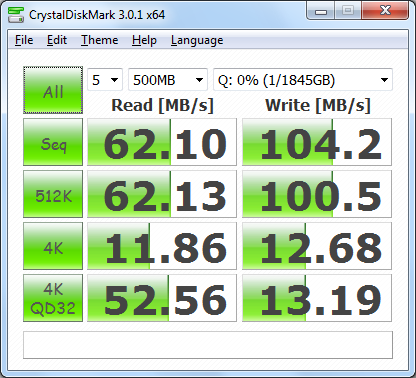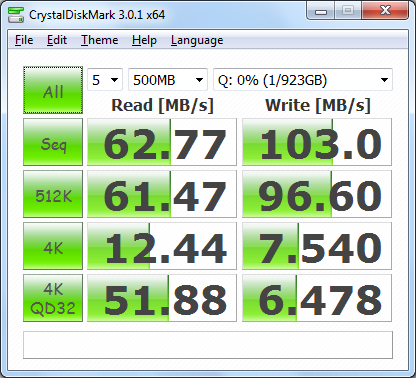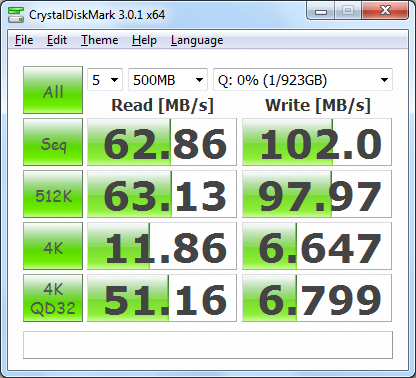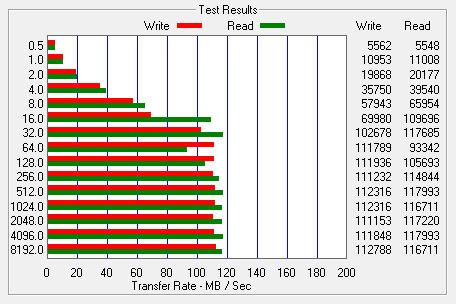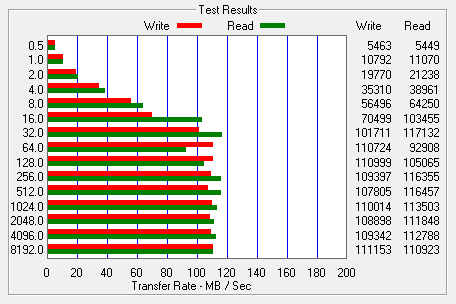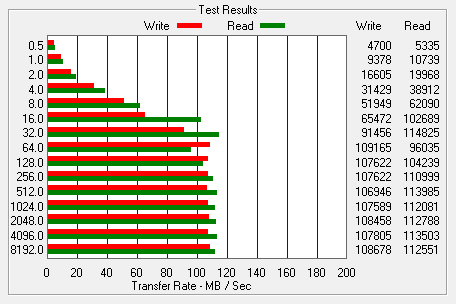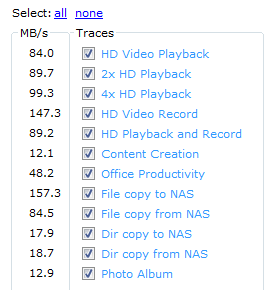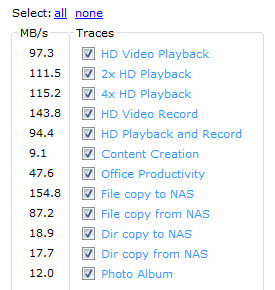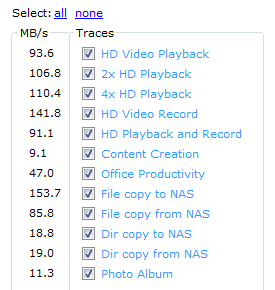The test system used in this review was an HP 8200 Elite. The computer came equipped with an Intel Core i5-2400 CPU, 4GB of DDR3 1333MHz memory, Seagate Barracuda 7200.12 ST3250312AS 250GB SATA 6 Gb/s hard drive, NVIDIA Quadro FX580 512MB PCIe graphics card and an Intel 82579-LM gigabit network card. For the operating system, I installed a fresh copy of Windows 7 Enterprise.
To test the performance of the QNAP TS-269L, I ran a series of benchmarks using CrystalDiskMark 3.0, ATTO Disk Benchmark 2.46, Iometer and the Intel NAS Performance Toolkit. The tests were first run using a pair of Seagate Barracuda 1TB (ST1000DM003) hard drives configured as RAID 0 and RAID 1 volumes and then again with them as two individual disks. To eliminate any network bottlenecks, the TS-269L was connected directly to the computer using a CAT6 ethernet cable.
CrystalDiskMark 3.0:
First, I ran a few quick tests using CrystalDiskMark. This benchmark tool measures the performance of a storage device by testing its sequential read and write speeds as well as its random read and write speeds using blocks 4KB and 512KB in size.
According to QNAP, the TS-269L is able to read at 221.8 MB/s and write at 220.8 MB/s when both networks ports are bonded. Using only one of the gigabit network ports, the NAS was able to read at 62 MB/s and write at about 103 MB/s.
ATTO Disk Benchmark 2.46:
I also used ATTO Disk Benchmark to test the TS-269L's sequential read and write speeds. The tests are run using blocks ranging in size from 0.5KB to 8192KB and the total length set to 32MB and 256MB.
The TS-269L performed better when tested with ATTO. With the two hard drives in a RAID 0 array, the unit topped out at 117 MB/s when reading and 112 MB/s when writing.
Iometer:
Next, I ran a series of tests using Iometer. This tool can be configured to benchmark a number of things. In this case, I used it to measure the TS-269L's sequential read and write speeds using blocks ranging from 512B to 2MB in size.
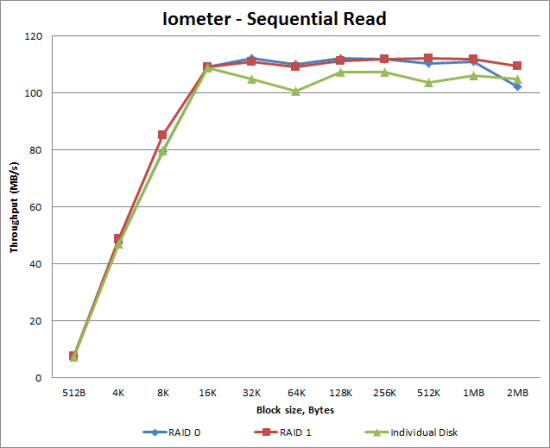
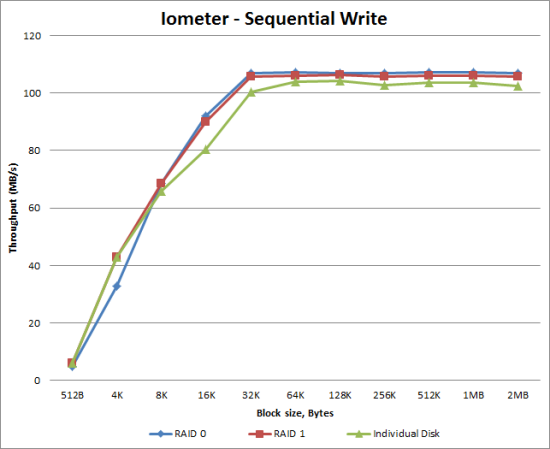
The TS-269L performed very well when tested with Iometer. When configured for RAID 0, the NAS was able to read at speeds as high as 112 MB/s and write at more than 107 MB/s.
Intel NAS Performance Toolkit:
The Intel NAS Performance Toolkit (Intel NASPT) is a file system exerciser and analysis tool designed to enable performance comparisons between network attached storage (NAS) devices. Intel NASPT focuses on user level performance using real world workload traces gathered from typical digital home applications: HD video playback and record, data backup and restore utilities, office productivity applications, video rendering/content creation and more.
The TS-269L reached some respectable speeds when streaming HD video and copying large files to and from the server. Unfortunately, its transfer rates dropped considerably when creating content and copying directories full of small files to the NAS.


